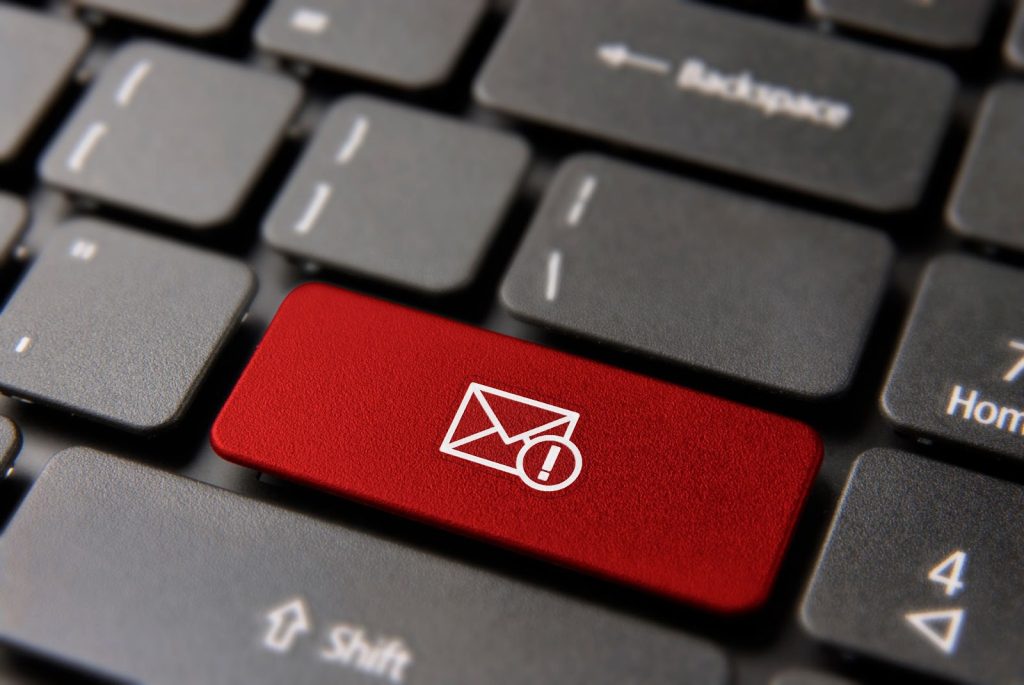Why email marketing matters
Email marketing is the lifeblood of modern digital strategies. With well-crafted email campaigns, businesses can reach their audience directly, forging personal connections that drive engagement and sales. Yet, achieving high email conversion rates can seem like a daunting task. That’s where Klaviyo comes in.
Imagine having a tool that simplifies the creation of stunning email campaigns and automates and personalizes them, ensuring each message resonates with its recipient. Klaviyo offers exactly this, transforming how businesses interact with their customers. It’s a game-changer, particularly with its robust free features that cater to businesses of all sizes.
This guide will help you become a master of Klaviyo, breaking down each step to help you maximize your email marketing efforts without spending a dime. Whether you’re new to email marketing or looking to refine your strategies, these insights will equip you to design, send, and track campaigns that convert, elevating your marketing game to new heights.
Setting up your Klaviyo account
Creating an email campaign account is the first step. Go to Klaviyo’s website, click the sign-up button, and enter your details. After submitting your information, you’ll receive a verification email. Click the link in the email to verify your account. Once verified, log in to your new account.
Next, integrate this with your e-commerce platform. Klaviyo supports various platforms like Shopify, WooCommerce, and BigCommerce. Navigate to the integrations tab and select your platform, and follow the instructions to connect. This integration allows you to sync your customer data, making email marketing more effective.
Understanding Klaviyo’s dashboard
Klaviyo’s dashboard can be overwhelming at first glance. Spend some time exploring it. The dashboard has several key sections: Lists & Segments, Campaigns, Flows, Signup Forms, and Analytics.
- Lists & Segments: These are your contacts. Lists are static groups of subscribers, while segments are dynamic groups based on certain conditions. For instance, you can create a segment of customers who purchased in the last 30 days.
- Campaigns: This is where you create and send one-time emails. Think newsletters, promotional offers, or product announcements.
- Flows: Automated email sequences. Examples include welcome series, abandoned cart reminders, and post-purchase follow-ups.
- Signup Forms: Tools for growing your email list. Create pop-ups, fly-outs, and embedded forms to capture new subscribers.
- Analytics: Track the performance of your email campaigns. Metrics like open rates, click-through rates, and conversions are crucial for measuring success.
Building your email list
A strong email list is the foundation of successful email campaigns. Start by importing your existing contacts into this software. If you’re starting from scratch, use Klaviyo’s signup forms to collect new subscribers. Offer incentives like discounts or free resources to encourage sign-ups.
Make your forms visually appealing and place them strategically. Use pop-ups effectively by timing them well. For example, trigger a pop-up after a visitor spends 30 seconds on your site or scrolls halfway down a page. This approach minimizes disruption to the user experience.
Beyond pop-ups, integrate signup forms into your website’s key locations, such as the footer, blog posts, and contact pages.
These forms should be straightforward, asking only for essential information like the email address and first name to reduce friction and increase the likelihood of sign-ups. Remember, the easier it is to join your list, the more subscribers you’ll gain.
Leverage social media to grow your email list further.
Promote your signup form through social media posts, ads, and even your bio. Encourage your followers to subscribe by highlighting the exclusive content and benefits they’ll receive. Collaborate with influencers in your niche to reach a wider audience and attract more subscribers to your list.
Creating your first campaign
To create an email campaign in this software, go to the Campaigns tab and click “Create Campaign.” Choose a name for your campaign and select the list or segment you want to target.
Next, design your email. Klaviyo’s drag-and-drop editor makes it easy to create professional-looking emails. Start with a template if you’re not comfortable designing from scratch. Add your logo, choose colors that match your brand, and keep the layout clean.
Focus on compelling content. Your subject line should grab attention and encourage openness. Personalize your email with the recipient’s name and tailor content to their interests. Use high-quality images and write engaging copy. Include a clear call-to-action (CTA) that directs readers to your website or a specific product page.
Before sending, test your email. Klaviyo lets you send test emails to yourself to check how they appear on different devices. Ensure your links work and your email looks good on desktop and mobile.

Automating with flows
Flows are one of Klaviyo’s most powerful features. They automate your email marketing, sending the right message at the right time without manual effort. Start with a welcome series. When someone subscribes to your list, this flow sends a sequence of emails to introduce them to your brand.
To set up a welcome series, go to the Flows tab, click “Create Flow,” and select “Welcome Series” from the templates. Customize the emails in the series to reflect your brand’s voice and message.
Abandoned cart emails are another essential flow. These emails remind customers who added items to their cart but didn’t complete the purchase. This flow can recover lost sales by nudging customers to complete their purchases.
To set this up, go to the Flows tab, click “Create Flow,” and choose “Abandoned Cart Reminder” from the templates. Personalize the emails with product images and a friendly reminder to check out.
Post-purchase flows enhance the customer experience. After a purchase, send a thank-you email, followed by a request for feedback or a review. You can also suggest related products to encourage repeat purchases. Customize these flows to maintain engagement and build customer loyalty.
Segmentation for better targeting
Segmentation divides your email list into smaller, targeted groups. This approach increases email conversion rates by sending relevant content to the right audience. This software’s segmentation is powerful and flexible.
Create segments based on behavior, such as recent purchases, browsing history, or email engagement. For example, a segment of customers who bought winter gear in the last three months might be interested in your new winter collection.
To create a segment, go to the Lists & Segments tab, click “Create Segment,” and define your conditions. Demographic segments are also useful. Group customers by location, age, or gender to send tailored messages.
For instance, promote an in-store event to customers near your physical store or offer a special discount to subscribers celebrating a birthday. Psychographic segmentation takes your targeting to the next level. This method groups customers based on their interests, lifestyles, and values.
For example, if you know certain subscribers are environmentally conscious, send them emails highlighting your sustainable products. By tapping into their passions, you can create more compelling and personalized campaigns.
Engage inactive subscribers with re-engagement campaigns. Create a segment of subscribers who haven’t interacted with your emails in a while, and send them special offers or incentives to bring them back. This revitalizes your email list and helps you maintain a healthy, active subscriber base.
Analyzing campaign performance
Analytics help you understand what works and what doesn’t. In the Analytics tab, you’ll find detailed reports on your email campaigns. Key metrics include open rates, click-through rates, and conversions.
Open rates show how many people opened your email. Aim for a high open rate by writing compelling subject lines and sending emails at optimal times. Experiment with different times and analyze which get the best results.
Click-through rates (CTR) indicate how many people clicked on links in your email. A high CTR means your content and CTAs are engaging. Improve CTR by making your emails visually appealing, using strong CTAs, and ensuring links are clear and accessible.
Conversions track the number of recipients who completed a desired action, such as making a purchase. High conversion rates mean your email campaigns effectively drive sales. Boost conversions by personalizing emails, offering irresistible deals, and creating a sense of urgency.

Optimizing email conversion rates
To maximize email conversion rates, continually optimize your strategies. A/B testing is a powerful tool for this. Test different subject lines, email designs, and CTAs to see what performs best. Klaviyo makes A/B testing easy. Choose a variable to test, create variations, and send them to a small portion of your list.
The winning version then goes to the rest of your subscribers.
Personalization significantly improves email conversion rates. Use customer data to tailor emails. Address recipients by their first name, recommend products based on past purchases and send content relevant to their interests. The dynamic content feature allows you to personalize emails at scale.
Timing is crucial. Send emails when your audience is most likely to open them. Analyze your open rates to determine the best times. For some businesses, early mornings work best, while others see higher engagement in the evenings.
Mobile optimization is essential. Many people read emails on their phones. Ensure your emails are mobile-friendly with a responsive design. Use larger fonts, single-column layouts, and clear CTAs that are easy to tap.
Creating engaging content
Content is king in email marketing. Keep your emails short and to the point. Focus on one main message per email to avoid overwhelming your readers. Use compelling headlines, engaging copy, and high-quality images to capture attention.
Tell a story. People connect with stories. Share customer success stories, behind-the-scenes looks at your business, or the story behind a new product. Storytelling makes your emails more relatable and engaging.
Visuals matter. Use images and videos to make your emails more attractive. High-quality product photos, infographics, and GIFs can enhance your message. Ensure visuals are relevant and not distracting.
CTAs should be clear and compelling. Use action-oriented language like “Shop Now,” “Learn More,” or “Get Started.” Place your CTA prominently and use contrasting colors to make it stand out. A/B tests different CTAs to see which ones drive the most conversions.
Leveraging social proof
Social proof builds trust and credibility. Include customer reviews, testimonials, and user-generated content in your emails. Highlighting positive experiences encourages others to buy. Feature real customer stories.
Share quotes or short stories from satisfied customers. Include their names and photos for authenticity. Social proof is powerful because it shows real people benefit from your products. Showcase user-generated content.
Encourage customers to share photos or videos using your products on social media. Feature this content in your emails with a callout like “See how our customers use our products.” This approach builds community and trust.
Incorporate social media mentions and hashtags into your emails to further validate your brand. Display a feed of recent posts where customers have tagged your brand or used a specific hashtag. This real-time interaction highlights your active and engaged customer base, reinforcing the authenticity and reliability of your products.
Utilizing advanced features
This software offers advanced features that enhance your email marketing. Smart sending prevents over-emailing. This feature skips sending emails to subscribers who received a certain number of emails within a specified timeframe. It helps maintain a positive relationship with your audience.
Product recommendations personalize emails based on customer behavior. Klaviyo’s product recommendation feature analyzes past purchases and browsing history to suggest products customers might like. This personalization drives more sales.
Dynamic content customizes email content for different segments. Use dynamic content to show different images, offers, or text based on the recipient’s preferences or behaviors. This approach makes your emails more relevant and engaging.
Maximizing deliverability
High deliverability rates ensure your emails reach the inbox, not the spam folder. Start with a clean email list. Regularly remove inactive subscribers to maintain a healthy list. High bounce rates hurt your sender reputation.
Authenticate your domain. Use SPF, DKIM, and DMARC authentication to improve deliverability. These protocols verify that your emails come from a trusted source.
Write clear, non-spammy content. Avoid all caps, excessive punctuation, and spam trigger words like “free” or “urgent.” Use a professional email address and avoid using no-reply addresses.
Monitor your sender reputation. Tools like Google Postmaster Tools and Sender Score help you track your sender reputation. A high reputation improves deliverability, while a low reputation indicates problems that need addressing.

Staying compliant
Compliance is crucial in email marketing. Follow regulations like GDPR and CAN-SPAM to avoid penalties. Always include a clear unsubscribe link in your emails. Honor unsubscribe requests promptly. Collect consent. Ensure subscribers opt-in to receive your emails.
Use double opt-in methods where subscribers confirm their email address after signing up. This practice builds a high-quality email list. Respect privacy. Protect subscriber data and use it responsibly. Be transparent about how you use data and provide options for subscribers to manage their preferences.
Evolving your strategy
Email marketing is not static. Continuously evolve your strategy based on performance data and industry trends. Regularly review your analytics to identify areas for improvement. Stay updated with email marketing best practices and Klaviyo’s new features.
Engage with your audience. Encourage feedback and listen to your subscribers. Use surveys or direct questions in your emails to understand their needs and preferences. Adapt your strategy based on their input.
Educate yourself. This software offers resources like webinars, blogs, and a community forum. Take advantage of these to deepen your knowledge and improve your skills.
Why email marketing matters
Email marketing is the lifeblood of modern digital strategies. With well-crafted email campaigns, businesses can reach their audience directly, forging personal connections that drive engagement and sales. Yet, achieving high email conversion rates can seem like a daunting task. That’s where Klaviyo comes in.
Imagine having a tool that simplifies the creation of stunning email campaigns and automates and personalizes them, ensuring each message resonates with its recipient. Klaviyo offers exactly this, transforming how businesses interact with their customers. It’s a game-changer, particularly with its robust free features that cater to businesses of all sizes.
This guide should help you dive deep into mastering Klaviyo, breaking down each step to help you maximize your email marketing efforts without spending a dime. Whether you’re new to email marketing or looking to refine your strategies, these insights will equip you to design, send, and track campaigns that convert, elevating your marketing game to new heights.
Let’s take a quick recap of what we’ve learned
Navigating the world of email marketing can feel overwhelming, but Klaviyo turns this challenge into an opportunity. By harnessing its features, from detailed analytics to powerful automation flows, you unlock the potential to connect with your audience in meaningful ways.
The strategies outlined here empower you to create targeted, personalized email campaigns that drive engagement and boost sales. The key to success lies in continuous learning and adaptation. As you implement these strategies, pay close attention to your analytics.
Let the data guide you, revealing what works and what needs tweaking. A/B testing different elements of your emails will provide invaluable insights, helping you refine your approach for maximum impact.
Remember, the quality of your content and the relevance of your messaging directly determine the strength of your email campaigns. Craft compelling stories, use eye-catching visuals, and always include a clear call to action. Personalize each email to make it feel tailored for the individual recipient.
Mastering Klaviyo means more than knowing the tool; it’s about understanding your audience and delivering value with every email. Stay curious, keep experimenting, and never stop optimizing. With dedication and the right strategies, you’ll see your email conversion rates soar, transforming your email marketing efforts into a powerhouse of engagement and revenue.
Revity: Your partner in powerful email campaigns
At Revity, we’re dedicated to seeing your marketing efforts succeed. Our expertise spans email marketing, social media marketing, search engine optimization, and more! If you need a team that tailors its strategies to your company’s specific needs, Revity is your go-to full-service marketing agency.
No matter where your business operates — locally, nationally, or globally — we’ll help you create and implement email campaigns that achieve exceptional results. We specialize in optimizing your email lists by removing invalid addresses and disengaged subscribers, ensuring your list is clean and ready for high deliverability.
Our goal is to maximize your email campaign’s effectiveness and reach. Keeping your email list in top shape, we help improve your sender reputation and boost your email conversion rates. Reach out to Revity today for a free estimate, and let us take your email marketing strategy to incredible levels!







